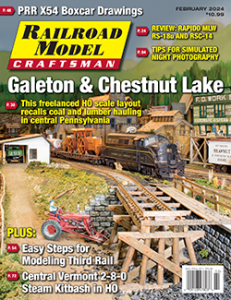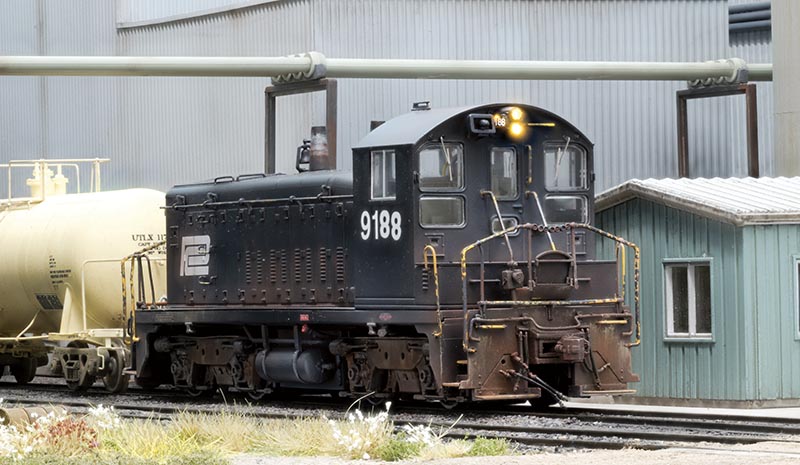 by Hunter Hughson/photos by the author
by Hunter Hughson/photos by the author
It’s human nature to construct ways around impediments to fulfill our basic needs. That was especially clear during the pandemic, when we all tried to fulfill our desire for human interaction. The pandemic could have driven us into hiding, but that’s not how people responded—especially in the model railroad community.
When restrictions forced in-person events to be canceled, my friends Ted Culotta and Ryan Mendell approached me about helping them produce a virtual Railroad Prototype Modeler meet. Both Ryan and Ted manufacture HO scale freight car kits. Their operations — and, to some extent, my micro-business of custom model building — are premised upon regional RPMs where a few hundred hobbyists gather for a weekend to attend clinics, explore the display room, and most importantly, socialize with like-minded friends they don’t often see.
Ryan, Ted, and I devised a new format, which we dubbed the “Virtual RPM,” hosted around the Zoom platform. We scheduled ten 30-minute clinics presented between the hours of noon and 8:00pm on a Saturday in June. Named “Hindsight 20/20,” we decided that if more than 50 people attended, that would be proof the event was a success. In the end, more than 250 registered. During the event, we set up a virtual tip jar and promised that if we had sufficient funding from tips, we’d run another. That format has been repeated 14 times since June 2020. It’s still free to register, and we still have hundreds of attendees.
The feedback we’ve received points to ongoing demand for a virtual meeting series, but dialing back the frequency because other aspects of our lives have returned to their pre-pandemic pace. The upside of fewer virtual RPMs is that I can finish more modeling projects, write some articles, and attend events in person again to nurture the great and valuable friendships I’ve made. The post-pandemic state of my hobby is better than ever. Zoom calls have become a routine thing and I’ve been able to make valued connections to great people who live far away from my home town. These friendships have greater depth and diversity than I could have imagined.
My hobby friendships have this extra dimension now because I can reach out to any of my friends for help with projects, even though I might only see them once a year at an RPM. The group of us together are far more knowledgeable than any one of us could ever be alone.
I should dedicate a few words that will correct some misconceptions about RPMs. There are folks who believe that RPMs are all about “rivet counting” — that obtuse pejorative that’s intended to divide people in this hobby into camps of opposing interests. It’s simply not true. You certainly can find some of the most astounding models at RPMs. You can see clinics by people whose skills seem unobtainable, and models where the rivets were, indeed, counted and replicated. But you’ll also see clinics like mine. I’m inspired by some of my friends who are rivet counters, but my models can’t be placed in that category of builds that are astoundingly accurate reproductions of specific pieces of railroad equipment.
I know that my clinic presentations have a place at the RPMs, but not as a rivet-counting spectacle of modeling prowess and deep prototype knowledge. While I aspire to continually improve and learn more, I also enjoy the fact that each of my models is a snapshot of a given moment in time. My “rivet-counting” friends accept the fact that my models take some creative license, and I accept the fact that I have plenty to learn from people who know where every rivet is supposed to be.
For example, the starting point for my model of Penn Central 9188 was the EMD SW1200 from Rapido. I approached this project with a specific goal in mind. I wanted to prove that it doesn’t take much to make a mass-produced model truly individualized following a prototype photo. In the end, I incorporated four simple changes to the model. I also removed some lettering, renumbered it, and put some weathering on it to make it unique. My project follows the spirit of prototype modeling, thanks in part to techniques and processes I have learned from my friends.
While I’m proud of this model and others I’ve done, the greatest value imparted by this hobby lies in the community of friends I’ve gained through events like regional RPMs — online or in person. And the last few years have been a great reminder of that.



